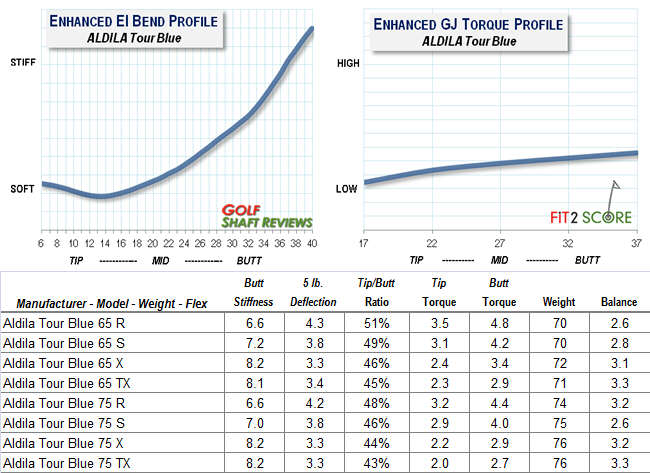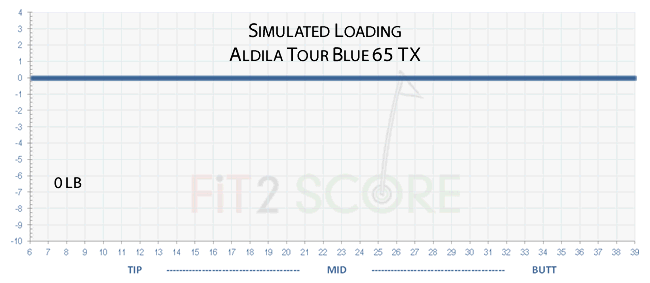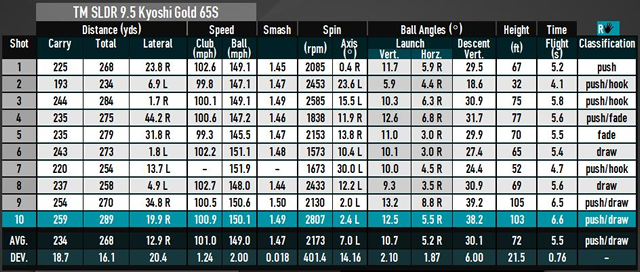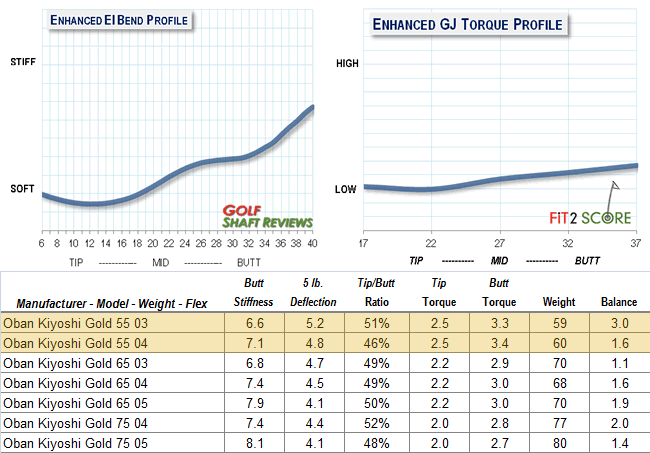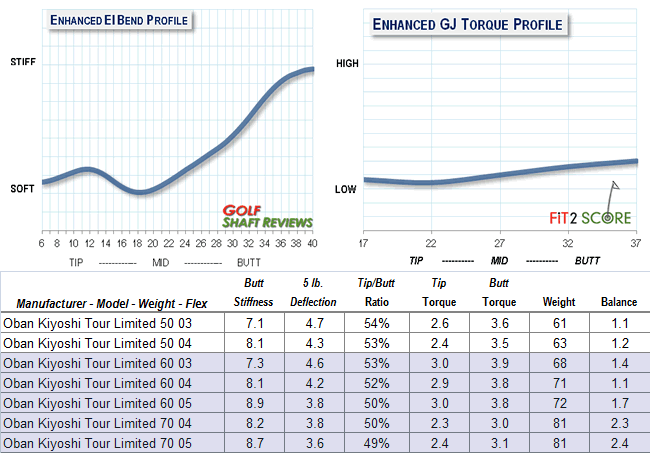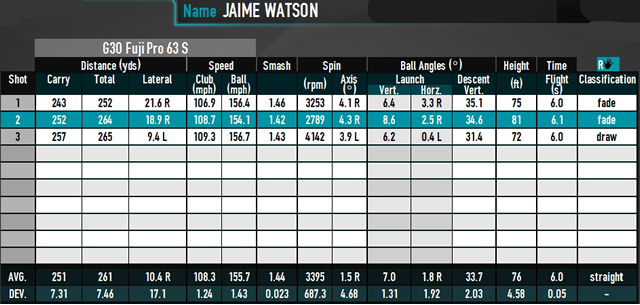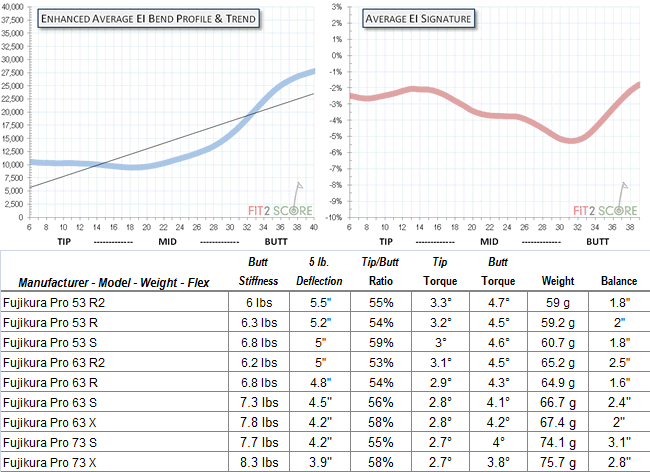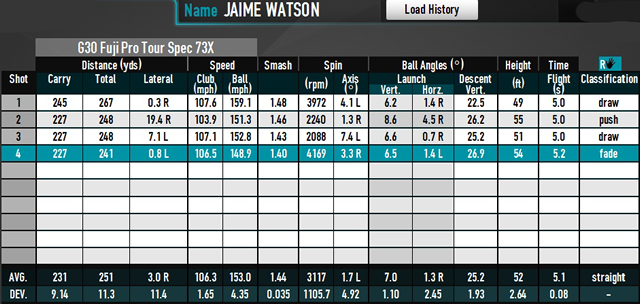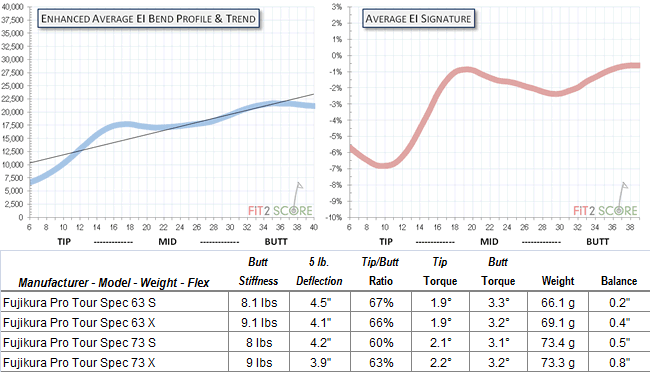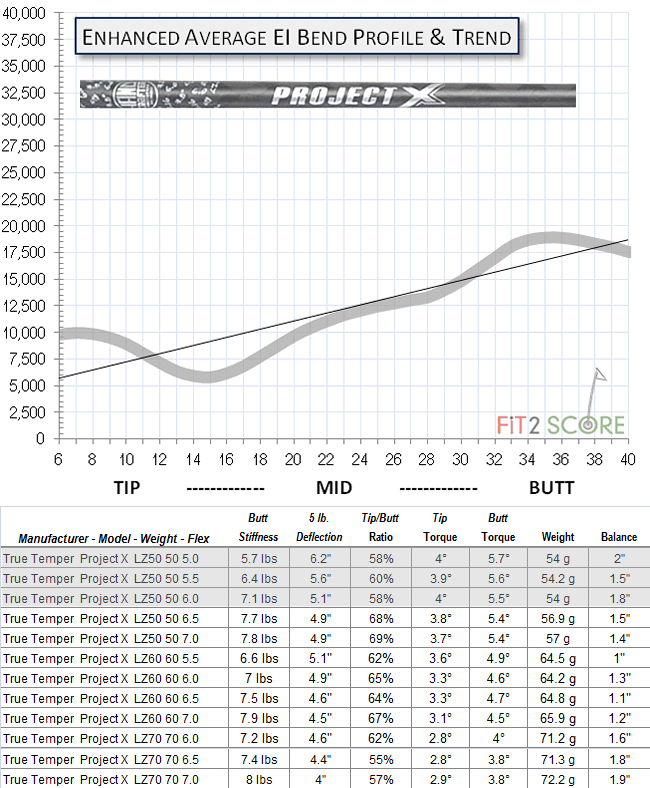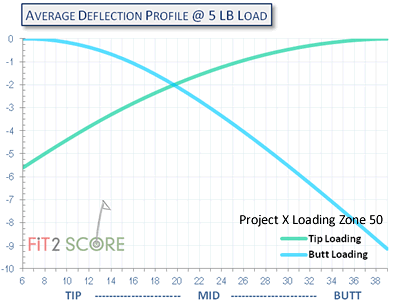Aldila Tour Blue and Green Driver Shafts
![Golf Digest 2013 Americas 100 Best transparent.fw]() Measurments By Russ Ryden, A Golf Digest America’s 100 Best Clubfitter
Measurments By Russ Ryden, A Golf Digest America’s 100 Best Clubfitter
Fit2Score, Dallas Fort Worth, Texas
Testing by John Dranshak
Dead Solid Perfect Golf Clubs, Columbus Ohio
The Aldila Tour Blue and Aldila Tour Green have now been with us for about a year and this review was first published last year. It has been updated with testing by John Dranshak, a club fitter that has been using 3 point EI profiles to guide his fitting process. These shafts are noted by Aldila as being made from ultra thin carbon fiber. This technology was first introduced in the Aldila NV and was unique in its day. Most premium shafts are now made with multiple layers of thin sheets. In my memory, Aldila pioneered this technique and a look at the radial consistency of these shafts shows what can now be accomplished in the mid price range ($250) of premium golf shafts. The shaft to shaft bend profile consistency of the Aldila Tour shafts is very good. You can be confident your shaft will be a very good match to the shaft you were fit with.
Aldila Tour Blue
The Aldila Tour Blue is an impressive classical design, soft mid in relation to tip and butt. Outstanding radial consistency, average 99.3% with a 0.5% standard deviation. This shaft is available as an option from most club companies.
With help from my friend and technical mentor, Dave Tutelman, I have expanded our 3 point EI measurements to create illustrations of shaft deflection under load. This is the first published illustration of the new addition to my software. The EI database that is the foundation of the GolfShaftReviews now shows how a shaft bends when loaded. Different loads can be applied and compared. With this information a fitter has a foundation to compare the relationship between a shaft profile and a golfers loading and release patterns. The bumps you see in the EI data shown in these reviews come out during the swing. What is left are subtle changes. Those subtle changes create the differences in feel, flight and dispersion that we recognize in different shafts.
Experience with this profile predicts a mid high launch.It will fit those with an aggressive transition. I like this profile in fairways.
Aldila Tour Green
 The Aldila Tour Green was in play on the PGA Tour at the end of the 2013 season. I saw it often on video coverage. A low launch design created with a soft trough at 26 inches and a stiff bump at 18. Not an uncommon design but new in the Aldila lineup. The reinforcement you can see in the tip section creates flat deflection below the mid-high maximum bend point, creating a lower launch. The Aldila Tour Green is one of the stock options in the Titleist 913D2 and the Titleist 913D3 drivers and can be found in many of the Titleist fitting carts.
The Aldila Tour Green was in play on the PGA Tour at the end of the 2013 season. I saw it often on video coverage. A low launch design created with a soft trough at 26 inches and a stiff bump at 18. Not an uncommon design but new in the Aldila lineup. The reinforcement you can see in the tip section creates flat deflection below the mid-high maximum bend point, creating a lower launch. The Aldila Tour Green is one of the stock options in the Titleist 913D2 and the Titleist 913D3 drivers and can be found in many of the Titleist fitting carts.
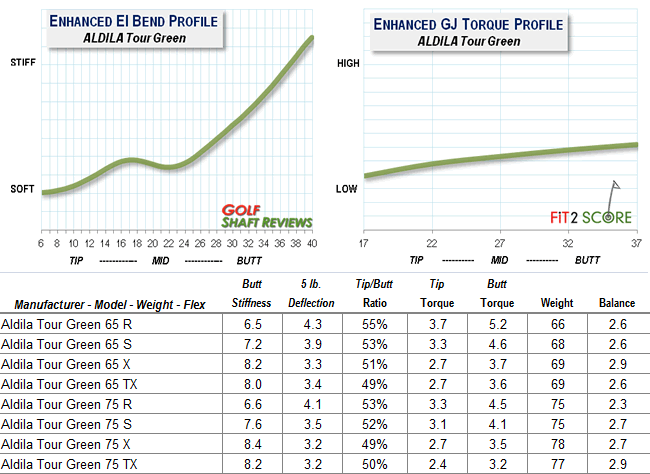 99.2% average radial consistency, with a 0.4% standard deviation. Excellent for rotating hosels. Both the Aldila Tour Blue and the Aldila Tour Green are high balance point shafts.
99.2% average radial consistency, with a 0.4% standard deviation. Excellent for rotating hosels. Both the Aldila Tour Blue and the Aldila Tour Green are high balance point shafts.
 This is another illustration from the new deflection rendering software. The tip stiffening bump seen in the Aldila Tour Green is nowhere to be seen in the deflection of the shaft under load. Yet it is there, creating a change in the angle the shaft delivers the head at impact. What we see in this illustration is a comparison of deflection of the different models of the Aldila Tour Green with a 5 pound load. Using this information, an informed fitter has a guide to stiffness unlike any other method I am aware of. The illustration below shows the Aldila Tour Green 65 TX under different loads. The different EI profiles result in very subtle changes between the Green and Blue versions of this latest design from Aldila.
This is another illustration from the new deflection rendering software. The tip stiffening bump seen in the Aldila Tour Green is nowhere to be seen in the deflection of the shaft under load. Yet it is there, creating a change in the angle the shaft delivers the head at impact. What we see in this illustration is a comparison of deflection of the different models of the Aldila Tour Green with a 5 pound load. Using this information, an informed fitter has a guide to stiffness unlike any other method I am aware of. The illustration below shows the Aldila Tour Green 65 TX under different loads. The different EI profiles result in very subtle changes between the Green and Blue versions of this latest design from Aldila. 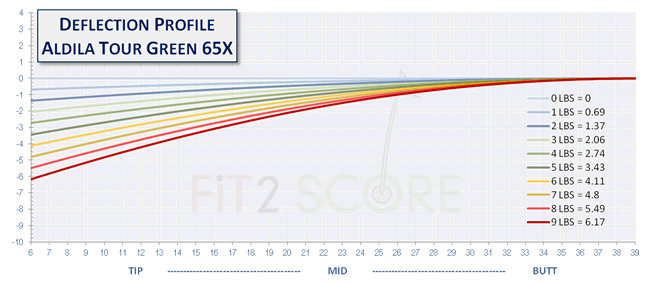
Simulated Deflection Loading
The new addition to the Fit2Score software renders simulated deflection under load and unload as it might happen during a golf swing. It is a very unique tool for understanding the performance of a golf shaft. The ability to model performance of a golf shaft is created by the 3 point bending shaft instrument used by reviewers on this site.
Performance Testing by John Dranshak
Player testing was performed at Golftec (Easton) in Columbus, OH by Joe Stago PGA Professional. Joe tested the Phenom Nasty Long, RIP NV, and standard NV shafts earlier this year and is familiar with the Aldila line of shafts. The shafts were paired with Adams XTD heads including Driver, 16.5* fairway metal and 20* and 23* hybrids.
The data shows that the Tour Blue will launch slightly higher than the Tour Green as expected from the EI profiles. The Tour Blue launched 1.2* higher with the driver and also had slightly higher spin numbers. Joe commented that both shafts felt very solid with the Tour Blue being much easier to get airborne with the hybrids and fairway metals. He particularly liked the Tour Blue in the 23* Adams XTD hybrid and commented that it was significantly longer than his current 23* hybrid. Joe praised both shafts for their stability and accuracy, and although he prefers a slightly lower spinning shaft for his swing with a driver, he was very impressed with the performance of both the Fairway Metal and hybrid shafts. Overall these shafts have excellent performance for the better golfer looking for the right combination of accuracy, distance and feel.


